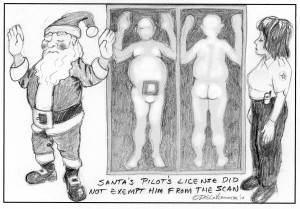By John Mattingly
Last month, I waved goodbye to my last commentary column by saying:
But why should farmers get higher prices for their crops? Isn’t food already expensive enough? That good loaf of bread that used to cost a buck is now crowding six. What if I told you that loaf should really cost you a twenty?
Next month, I’ll discuss why higher commodity (and thus food) prices are not only inevitable, but necessary.
Is food already expensive enough? Maybe, but not compared to cross-training shoes, new pickups, military spending, a hospital stay, or a phone bill. Back in 1935, the Agricultural Adjustment Act (AAA) used a statistical model to see if ag prices were keeping pace with the rest of the economy. The concept is called parity, and 1914 was used as the base year. Operation of the model compared percentage price increases/decreases for farm commodities relative to other key components in the economy such as steel, minerals, housing, medical, etc.
Using 1935 AAA model, a loaf of bread in the year 2010 should cost a little over $20. The reasons it doesn’t start with the wheat farmer’s lack of market share as a producer (resulting in no real influence over market prices), and the fact that wheat farmers have increased the average wheat yield from about 15 bushels in 1914 an acre to around 90 bushels an acre in 2010. It doesn’t always pay to be productive.
But perhaps the most significant influence on the current state of agriculture in the U.S. is/was a 1973 policy change in the Nixon administration (Earl Butz, Secretary of Agriculture) that did away with the long-standing acreage set-aside program, replacing it with price supports that stimulated sod busting and fencerow-to-fencerow production. I’ve discussed the internal mechanics of how this worked, and the bizarre sub-programs it spawned in previous articles, so I’ll give only a broad brush summary here.
Prior to the 1973 policy change, farmers received a modest payment from the government for setting aside, or fallowing, 10 to 20 percent of their measured and certified cropland acres. The concept was simple and effective: reduced acres in production resulted in less production, and thus a reasonable probability of decent commodity prices to farmers. But the oil embargo in the fall of 1973 sent commodity prices soaring, for reasons that had more to do with capital seeking a safe haven than supply and demand.
But the folks in government didn’t figure this out (why is it the people at the top always seem to be behind the curve?). Nixon’s people saw rising prices as a symptom of shortages. They feared higher commodity prices could cause food prices to escalate to politically unacceptable levels in an election year (1974), so Butz suggested to Nixon that the government do away with set-aside acres, and in its place create a (what morphed into a very complicated) program in which the government provided a price guarantee on basic ag commodities such as corn, wheat, soybeans, cotton, etc.
This turned out to be a shrewd political move at the time for a couple of reasons. First, Nixon claimed he was doing away with the foolish program of “paying farmers not to produce,” something the U.S. public constantly cited as repugnant, and second, commodity prices fell off precipitously soon after the new policy was enacted, though for reasons rather unrelated to the policy change.
Ignoring the basic principle that correlation is not causation, Nixon’s successors in office thought the price guarantee policy for farm commodities superior to the set-aside program because, well, not surprisingly, commodity and food prices remained relatively cheap. The reason: price supports stimulated over-production. Think about it. If a farmer knew the government would support wheat prices at, say, $4.00 a bushel, the farmer’s strongest incentive was/is to produce the greatest number of bushels. The farmer amps up the fertilizer and pesticides, the chemical companies breed varieties that respond to more chemicals, and when the day is over, the farmer can’t help but look across his fence at fragile prairie land, or land that should be left to goats, and think more bushels. Oddly, many people still think farmers are paid for not producing, when the fact is that U.S. farmers are underpaid for overproducing. (And, recalling my article last month about the failure of the 1976 Farmer’s Strike, it should be clear by now that farmers, as a group, much prefer to bust the bin that bust the bank.)
The “old” set-aside program, that terminated in 1973, had the effect of conserving soil capacity while creating an incentive for farmers to produce fewer bushels and get paid more for them. When I started farming in 1968, for example, wheat was around $3.00 a bushel. Today it’s around $6.00 a bushel (and considered at the high end of its historical price range). But in 1968, diesel fuel was 15 cents a gallon in bulk, today it’s around $3.00, fertilizers were less than $20 a ton; today phosphorus is a bargain at $700 a ton (peaking in 2009 at $1600 a ton), a good tractor for an economy-of-scale farming operation cost less than $10,000, while today a dealer offered me a great deal at $126,000. I could go on: A good hired man in 1968 worked for me for $300 a month and a place to live. A new pickup was $4,500. The list goes on and on.
If I could pick an era in which to be a farmer, it would be the era of acreage set-asides, not price supports. Price supports have led to overproduction which translates to a mammoth, senseless depletion of our national topsoils that makes soil erosion (which gets so much media attention) look like a pimple in the middle of a quarter section. Worse, the price support system has led to monoculture farming, which is why something like 80% of the SKUs in a typical U.S. supermarket contain corn or soybeans in some form or another because corn and soybeans are primary beneficiaries of price supports.
We all understand, in one way or another, that we persist on Earth at the courtesy of a relatively thin layer of topsoil. Farming is actually slow motion mining, removing small quantities of minerals from the topsoil after they have interacted with sunlight, farmer ingenuity, and stored solar energy (oil and natural gas) to produce carbohydrates of varying complexity. If we mine out the Earth’s fertility, we perish. There is considerable self interest entwined in consumer willingness to pay a fair (read “higher”) price for food, particularly when we realize that we are using massive amounts of stored solar energy to accelerate the process of mining the Earth’s topsoil, a strategy guilty of a very dubious endgame.
I often urge folks to think about all this when eating a big meal at Thanksgiving, or when complaining about “farmers being paid to not produce.”
There is a program today, the Conservation Reserve Program (CRP), that pays a farmer/landowner to fallow the farm on a ten year contract with many limiting provisions. The payments from the government to a farmer participating in the CRP are seldom competitive with price supports because even though the farmer is not producing a crop on CRP land, the land must be maintained free of weeds, pests, and erosion, so there is an expense to the fallowing that, in most cases, is barely covered by the government payment. Some diabolically clever farmers put land into CRP that they never would have farmed anyway, and then find ways to skimp on the maintenance requirements. Like any program, there are always a few who figure out a way to take advantage.
Fundamentally, however, I believe programs like CRP, or the old set-aside programs, are much better strategies for sustainability than price supports which encourage overproduction. To take this down to where the bear sh!#s in the buckwheat, look again at phosphorus, the element I mentioned earlier that is now a bargain at $700 a ton. As its hyperbolic price increase suggests, phosphorus is scarce on the planet, but vital to photosynthesis. The ATP molecule, Adenosine Tri-Phosphate, is the “engine” by which plants convert sunlight into carbohydrate. In other words, without phosphorus, there is no plant growth. How much sense does it make to have a national policy that encourages farmers to turn a diminishing supply of $700 a ton phosphorus into piles of cheap corn, soybeans, and wheat?
And remember that China and India are now force feeding their agricultural systems, competing for phosphorus and other key plant nutrients. U.S. farmers are already in a hopeless bidding war. Many of the big suppliers of nitrogen, phosphorus, and potassium (the N-P-K basics of fertilizer) are being bought and controlled by Asian companies.
Of course, the phosphorus doesn’t exactly disappear off the planet when farmers use all their tricks to combine it into cheap commodities, but the phosphorus becomes less accessible than it already is, becoming a part of human and animal bones and teeth. Not exactly a handy form for use as future fertilizer. Back in the days of the mass buffalo slaughter on the Great Plains, buffalo bones were shipped back east for grinding into fertilizer at astounding rates, literally millions of tons a month, from bone piles that would bury a modern football stadium. This would not be possible today due, ironically, to environmental limitations, but rest assured, we will, at some point in the near future, see some sort of massive bone harvest again to get at the phosphorus.
In the meantime, the only phosphorus our current (and recent past) administrations have been worried about is what might end up in a bomb. I wish to go on record today, with this article, predicting that, within the next ten years, phosphorus in topsoil will prove far more vital to national security than the phosphorus in any bomb.
John Mattingly cultivates prose, among other things, and was most recently seen near Creede.


